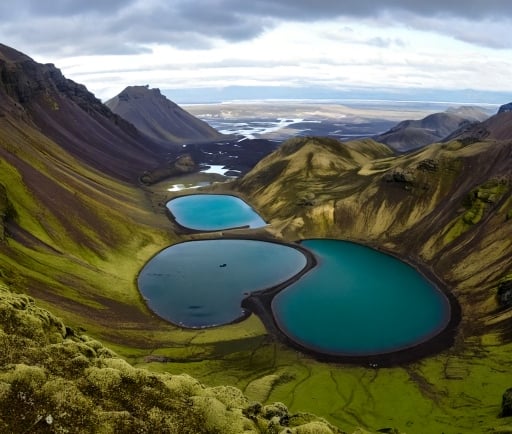The Formation and Significance of Glacial Kettle Lakes


Introduction to Glacial Kettle Lakes
Glacial kettle lakes are fascinating natural formations that often capture the imaginations of geologists and nature enthusiasts alike. These lakes occur in regions previously covered by glaciers, where the immense weight of the ice creates depressions in the earth. When the glacier retreats, these depressions can fill with water, forming lakes that are often noted for their unique shapes and vibrant ecosystems.
How Glacial Kettle Lakes Are Formed
The process of formation for glacial kettle lakes is complex, involving both geological and climatic factors. As glaciers carve through landscapes, they leave behind a variety of features. One of the most significant of these features is the drumlin, an elongated hill formed by glacial debris. As the glacier melts, large blocks of ice may become isolated from the main body of ice, becoming completely surrounded by sediment. Over time, these ice blocks will melt completely, resulting in a depression or cavity. When this cavity fills with water, it transforms into a kettle lake.
These kettle lakes often form in a necklace-like arrangement parallel to the glacier tongue. This unique alignment showcases the dynamic interactions between glacial movements and topographic changes. Each lake is distinct in characteristics, size, and depth, with some existing as shallow ponds while others can evolve into significant bodies of water.
The Ecological Importance of Glacial Kettle Lakes
Glacial kettle lakes play a crucial role in their ecosystems. Their formation often leads to diverse habitats that support a wide variety of plant and animal life. The sheltered conditions of kettle lakes provide excellent breeding grounds for fish, amphibians, and waterfowl, creating rich biological networks. Moreover, these lakes can be essential for local water systems, replenishing aquifers and providing watershed benefits to surrounding areas.
Beyond their ecological functions, glacial kettle lakes also hold cultural and recreational significance. Many such lakes serve as popular destinations for outdoor activities, including fishing, boating, and hiking. The aesthetic beauty of these lakes, complemented by surrounding landscapes, attracts visitors and supports local tourism. Consequently, preserving these lakes becomes vital for maintaining both biodiversity and economic opportunities in affected regions.
Conclusion: The Future of Glacial Kettle Lakes
As climate change continues to impact glacial regions worldwide, the fate of glacial kettle lakes hangs in the balance. The potential for increased melting or alterations in precipitation patterns could drastically impact these delicate ecosystems. Ongoing research and conservation efforts are essential to ensure that these natural wonders remain preserved for future generations. Understanding the formation processes and ecological significance of glacial kettle lakes helps emphasize their importance and the need for sustained environmental stewardship.
